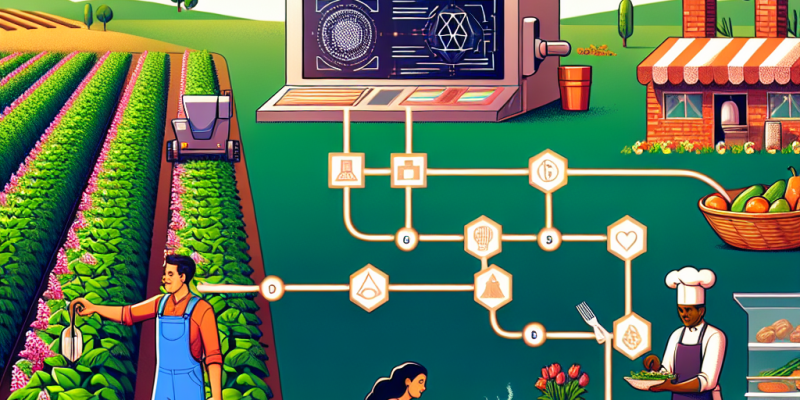From Farm to Table: Blockchain’s Role in Ensuring Food Safety and Traceability

From Farm to Table: Blockchain’s Role in Ensuring Food Safety and Traceability
In recent years, the global food industry has faced increasing scrutiny over food safety, quality control, and supply chain transparency. High-profile foodborne illness outbreaks and scandals have highlighted the vulnerabilities in traditional food systems, prompting consumers, regulators, and producers alike to seek solutions that can restore faith in the food supply chain. One of the most promising technologies emerging in this context is blockchain, a decentralized and immutable digital ledger system that can enhance food safety, traceability, and accountability from farm to table.
Understanding Blockchain Technology
Blockchain technology represents a radical shift in the way data is recorded, shared, and verified. Unlike traditional databases that are controlled by a single entity, a blockchain is decentralized and maintained by a network of computers (nodes). Each transaction or data entry is recorded in a block, and once the block is filled, it is linked to the previous one, forming a chain. This process creates an immutable record of all transactions, making it nearly impossible to alter information without the consensus of the entire network.
Enhancing Traceability in the Food Supply Chain
Traceability refers to the ability to track and trace the journey of food products through all stages of production, processing, distribution, and consumption. While traditional traceability systems often rely on paper-based records and siloed data, blockchain offers a more robust solution.
-
Real-Time Data Sharing: Blockchain allows all participants in the food supply chain—farms, processors, distributors, retailers, and consumers—to access real-time data. For instance, if a batch of contaminated produce is detected, stakeholders can quickly identify and isolate affected products, reducing the scope of recalls.
-
Immutable Records: Once data is entered into a blockchain, it cannot be altered or deleted. This feature enhances accountability and trust, as all transactions and food safety checks are permanently recorded. In the event of a foodborne illness outbreak, health authorities can trace the source of contamination with unprecedented speed and accuracy.
- End-to-End Visibility: Consumers are increasingly interested in knowing where their food comes from. Blockchain provides transparency, allowing consumers to verify the origin and journey of their food products. This can be achieved through QR codes on packaging that link to detailed information stored on the blockchain, including farm practices, processing methods, and certifications.
Strengthening Food Safety Protocols
The implications of blockchain go beyond traceability; they also enhance food safety protocols at multiple levels:
-
Compliance and Certifications: Blockchain can streamline the verification process for food safety certifications and standards (e.g., USDA Organic, HACCP). This ensures that producers adhere to safety regulations and that their claims are verifiable.
-
Supply Chain Integrity: By enabling stakeholders to share data about every step in the supply process, blockchain helps identify potential points of failure or contamination. This mitigates risks and enhances the overall integrity of the food supply chain.
- Fraud Prevention: Food fraud, including mislabeling and adulteration, poses significant challenges to food safety. Blockchain’s transparency makes it more difficult for fraudulent practices to go unnoticed, as each transaction can be traced back to its source.
Challenges and Considerations
Despite its promise, the adoption of blockchain in the food industry is not without challenges. The technology requires significant investment in infrastructure and training for stakeholders. Additionally, the integration of existing systems with blockchain solutions can be complex. There are also concerns regarding data privacy and standardization across different blockchain platforms.
Moreover, for blockchain to be effective, it requires widespread cooperation among all participants in the food supply chain. This means that industry stakeholders must be willing to share information and work collaboratively, fostering a culture of transparency and trust.
Conclusion
Blockchain technology holds tremendous potential in addressing critical issues related to food safety and traceability. By providing a secure and transparent framework for data sharing, it can revolutionize the way we manage our food systems, from farm to table. As consumers demand higher standards of food safety and transparency, the integration of blockchain solutions will likely become a cornerstone of modern food production and distribution, paving the way for a safer, more trustworthy food supply for all.













